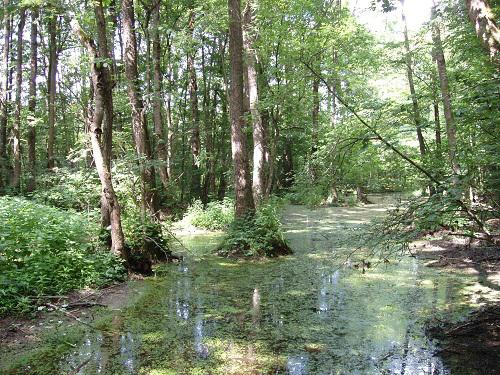Bohdan Prots
This project aims to provide ecological and conservation research data in order to inform designation of National and International Importance Sites for the riverine forests in the Carpathian region of Ukraine; to raise a public awareness on the role of floodplain forests.

The Carpathian region represents one of Europe’s last great wilderness areas. WWF has identified the Carpathians as one of 200 ecoregions globally outstanding for their biodiversity. The part of the riverine forests of the region represent the surviving refuge of unique riverine forests of Central Europe, described in the CORINE Biotopes manual as: "most diverse, structurally, floristically and faunistically, of all European ecosystems..., the great fluvial forests of Europe are reduced to a few highly vulnerable examples". Their importance was not appreciated due to extensive drainage activities during the Soviet times. At present the most of remnants have no effective conservation designation.
Furthermore, Ukraine has not yet established the Ramsar Sites in the region (with exception of Synevyr Lake, 29 ha). Besides that, the riverine forests are very poor represented in the National Network of protected areas (in total of 500 ha only). The potential Ramsar Site network could contain up to 7,000 ha of riverine forests. The studies on establishment of Ramsar Sites in the Ukrainian Carpathians have been conducted never before. The imminent threat of further riverine forests destruction provides an urgent need to work towards the establishment of the Ramsar Site Network. The planned inventory, assessment and conservation of the forests would:
(1) lead to the designation of Ramsar Sites and provide a baseline for long-term monitoring;
(2) Ramsar status of the forests could help to reduce the loss of riverine habitats;
(3) riverine forests could be established as important keystone territories within the ecological network;
(4) heightened conservation status would encourage development of more sustainable forestry production systems;
(5) conservation and sustainable use of the forests could reduce the risk of heavy floods, stabilise hydrological situation and decrease the pollution of the floodplains.
The major planned project activities are follow:
(1) to carry out a comprehensive survey in order to characterise and evaluate the basic biodiversity parameters;
(2) to organise meetings with authorities on the conservation and sustainable development of identified high conservation value forests;
(3) to prepare the stakeholders analysis;
(4) to recognize the public awareness on the role of the forests for the areas and to gain a public support on the establishment of protected areas;
(5) to apply national and international expertise and collaboration with forestry/conservation management authorities to prepare documentation for the Ukrainian Government and Ramsar Secretariat on the establishment of National and International Importance Sites for the riverine forests.